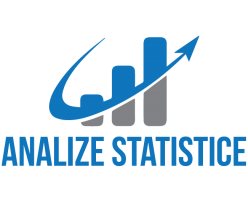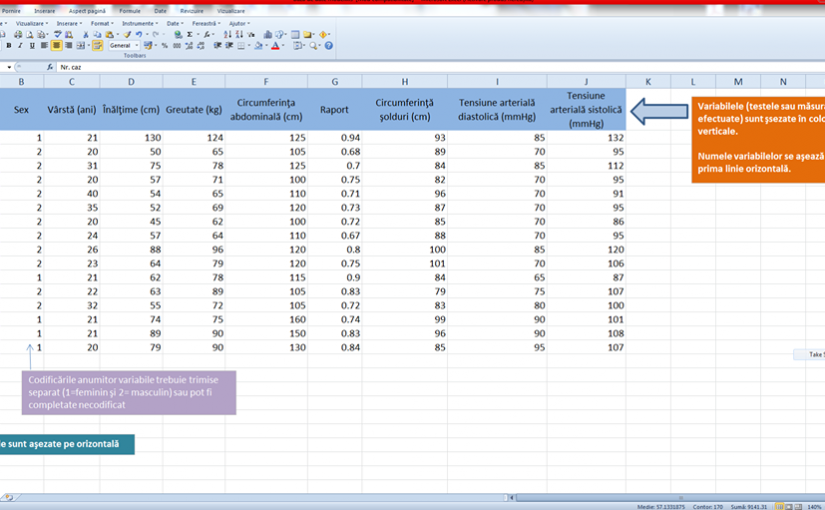The simplest version of a database can be created in Excel, which is why we are providing you with a short guide on how to prepare it. Each row in the database should represent one study participant, and each column should correspond to a measurement taken from the participants (e.g., age, sex, weight, height, blood pressure, stress level, etc.).
For repeated measurements, if you assessed the same variable at different time points (e.g., after 1 month, following an intervention), we recommend using Arabic numerals after the variable name, such as: Weight 1, Weight 2, Weight 3.
The first row of the database must contain the name of the measurement you performed, written in full, without abbreviations. These names will later be used in tables and charts.
If you would like the data processing to be done in Romanian, then the table headers should be in Romanian; if you want the processing in English, then the table headers should be in English.
For ordinal and nominal data, if you are coding them yourself, please make sure to also provide the coding scheme.

